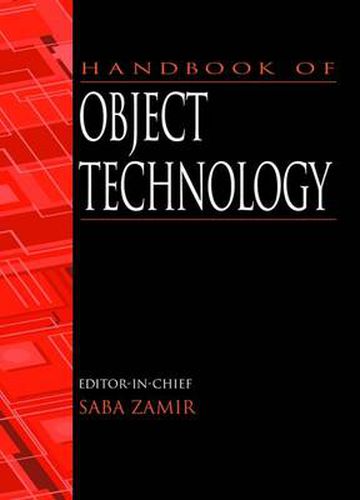Readings Newsletter
Become a Readings Member to make your shopping experience even easier.
Sign in or sign up for free!
You’re not far away from qualifying for FREE standard shipping within Australia
You’ve qualified for FREE standard shipping within Australia
The cart is loading…






The object oriented paradigm has become one of the dominant forces in the computing world. According to a recent survey, by the year 2000, more than 80 per cent of development organizations are expected to use object technology as the basis for their distributed development strategies. Handbook of Object Technology encompasses the entire spectrum of disciplines and topics related to this rapidly expanding field - outlining emerging technology, latest advances, current trends, new specifications, and ongoing research. The handbook divides into 15 sections, each containing several chapters related to that specific discipline. Up-to-date, non-abstract information provides the reader with practical, useful knowledge - directly applicable to the understanding and improvement of the reader’s job or the area of interest related to this technology. Handbook of Object Technology discusses: - the processes, notation, and tools for classical methodologies as well as information on future methodologies - prevalent and emerging languages - standards and specifications - frameworks - databases - operating systems - metrics - business objects - reuse - intranets - analysis/design tools - client/server application development environments.
$9.00 standard shipping within Australia
FREE standard shipping within Australia for orders over $100.00
Express & International shipping calculated at checkout
The object oriented paradigm has become one of the dominant forces in the computing world. According to a recent survey, by the year 2000, more than 80 per cent of development organizations are expected to use object technology as the basis for their distributed development strategies. Handbook of Object Technology encompasses the entire spectrum of disciplines and topics related to this rapidly expanding field - outlining emerging technology, latest advances, current trends, new specifications, and ongoing research. The handbook divides into 15 sections, each containing several chapters related to that specific discipline. Up-to-date, non-abstract information provides the reader with practical, useful knowledge - directly applicable to the understanding and improvement of the reader’s job or the area of interest related to this technology. Handbook of Object Technology discusses: - the processes, notation, and tools for classical methodologies as well as information on future methodologies - prevalent and emerging languages - standards and specifications - frameworks - databases - operating systems - metrics - business objects - reuse - intranets - analysis/design tools - client/server application development environments.